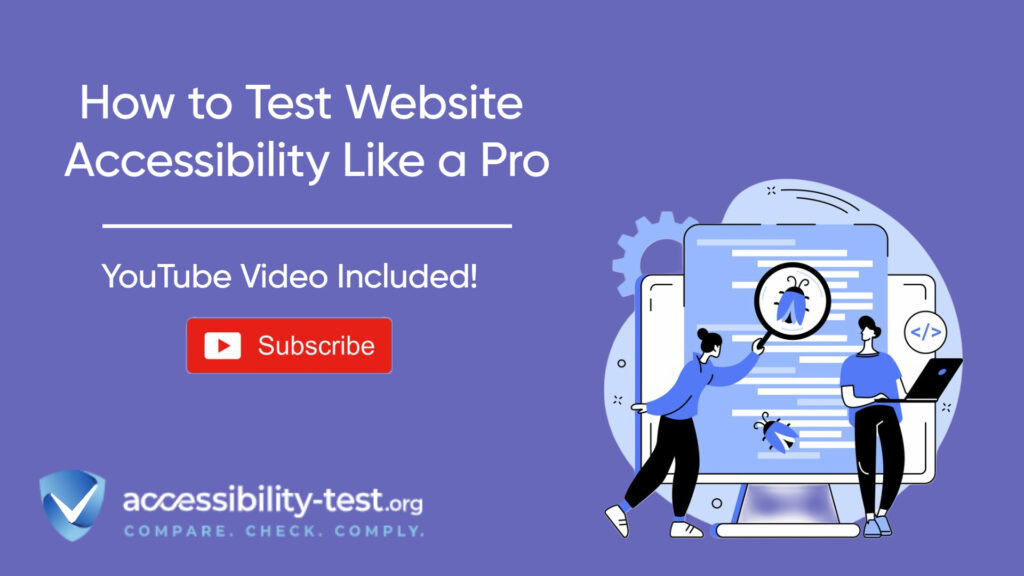Website Accessibility Testing
Website accessibility testing is a crucial aspect of web development that ensures all users, regardless of their abilities, can access and interact with online content. It is a systematic approach to evaluating a website’s functionality for individuals with physical, cognitive, or sensory disabilities. By adhering to the principles of accessibility, creators can foster an inclusive online environment that accommodates a diverse audience.
Accessibility testing seeks to identify and mitigate barriers that may hinder users from fully engaging with a website. This is particularly essential as the internet has become a vital resource for information, services, and communication. With the rising importance of inclusivity, organizations increasingly recognize that accessible websites not only enhance user experience but also expand their reach to a broader audience, thus driving engagement and customer loyalty.
One key framework guiding website accessibility is the Web Content Accessibility Guidelines (WCAG) 2.2. These guidelines outline specific criteria that web designers and developers should follow to create accessible web experiences. The WCAG standards are organized into four fundamental principles: perceivable, operable, understandable, and robust. By implementing these principles, digital content can be made accessible, ensuring users can perceive information, interact with elements, understand the content, and benefit from diverse platforms and devices.
Adhering to these standards is not just a best practice; it is often a legal requirement. Various countries have enacted laws mandating equal access to information, making it imperative for businesses and organizations to prioritize accessibility in their web design processes. Consequently, website accessibility testing is not merely a technical requirement, but a moral obligation to ensure that everyone can navigate the digital landscape independently and effectively.ng, it is essential to view these resources as instruments that empower us to create an inclusive digital world in 2025 and beyond.
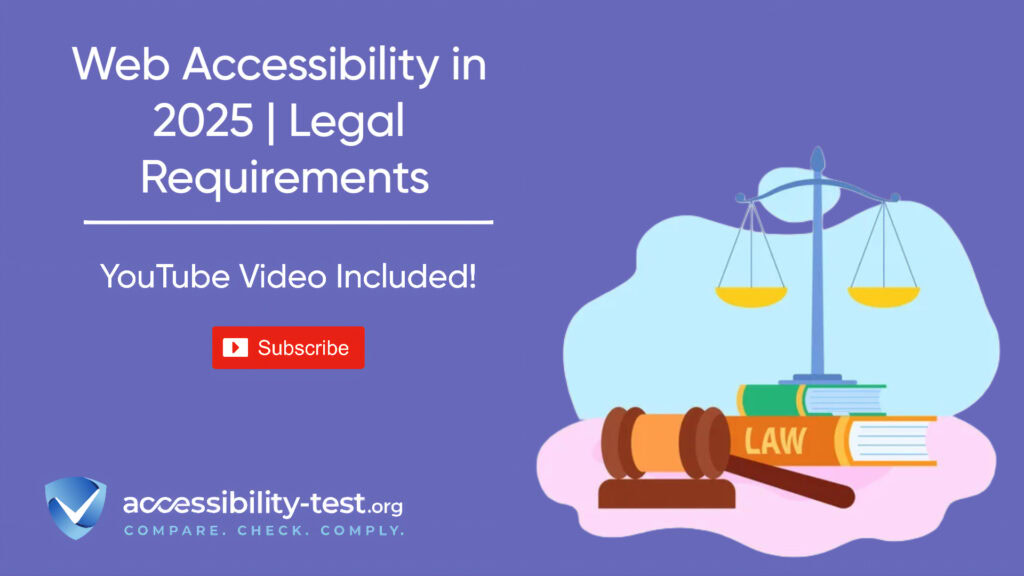
Understanding the 360° Approach to Accessibility Testing
The 360° approach to accessibility testing is a comprehensive methodology designed to evaluate a website’s accessibility from multiple angles. This approach integrates various testing techniques and tools to ensure that all potential barriers are identified and addressed. By considering the diverse perspectives of users with different disabilities, this methodology helps in creating a more inclusive web experience. In essence, the 360° approach does not just focus on a single aspect of accessibility; instead, it examines the entire user journey, making it holistic in nature.
One of the main advantages of adopting a 360° approach is its ability to provide thorough coverage of accessibility issues that might otherwise go unnoticed. Traditional testing methods often rely solely on automated tools, which can miss nuanced aspects of accessibility, such as user experience or content comprehension for individuals with cognitive disabilities. By incorporating manual testing alongside automated assessments, the 360° approach captures a broader spectrum of accessibility barriers, including visual, auditory, cognitive, and motor challenges.
Furthermore, the 360° approach emphasizes collaboration among various stakeholders, including developers, designers, content creators, and users with disabilities. This collaborative effort ensures that all voices are heard during the testing phase, allowing for the identification of issues that may be overlooked by technical teams alone. Engaging users with disabilities in this process can reveal valuable insights about real-world interactions with a website, leading to more effective solutions.
Another key benefit is that implementing a comprehensive accessibility testing strategy can significantly reduce the risk of legal implications and enhance a website’s reputation. As society increasingly values inclusivity, businesses that prioritize accessibility are likely to see improved user satisfaction and engagement. Overall, adopting a 360° approach to accessibility testing is essential for ensuring that your website is not only compliant but also genuinely accessible to all users. For many organizations to fully implement digital content that is accessible, thus facilitating equal access to information and services across Europe.
The Importance of a Methodical Testing Approach
In the realm of web development, ensuring accessibility is essential for creating inclusive digital environments. This task has gained increased significance due to the rapidly evolving nature of the digital landscape, where websites frequently undergo updates and changes. As a result, a methodical approach to accessibility testing becomes crucial. A structured methodology not only addresses immediate accessibility concerns but also creates a sustainable framework that allows for consistent evaluations as websites develop over time.
One of the greatest challenges faced by web developers and content creators is the impracticality of manually testing every single page for accessibility. With extensive websites containing numerous pages and a variety of content types, a thorough manual review would require an overwhelming investment of time and resources. This makes it necessary to adopt a systematic approach that prioritizes critical areas of the site while still recognizing the need for comprehensive coverage of accessibility issues.
Moreover, reliance solely on automated testing tools presents its own set of limitations. Though these tools can streamline the accessibility evaluation process, they typically identify only around 30-40% of potential issues. This incomplete assessment may lead organizations to mistakenly perceive their websites as fully compliant with accessibility standards. Such a false sense of security can result in significant barriers—for users with disabilities—overlooked attributes that automation cannot detect. Therefore, a balanced blend of both automated and manual testing approaches, guided by well-defined methodologies, will prove to be more effective.
In conclusion, a systematic strategy for accessibility testing is invaluable in promoting inclusivity across digital platforms. By navigating the complexities of web accessibility with a methodical mindset, organizations can better ensure their websites are accessible to all users, ultimately fostering a more diverse and engaged audience will further enhance its effectiveness aligns with legal obligations in many jurisdictions.
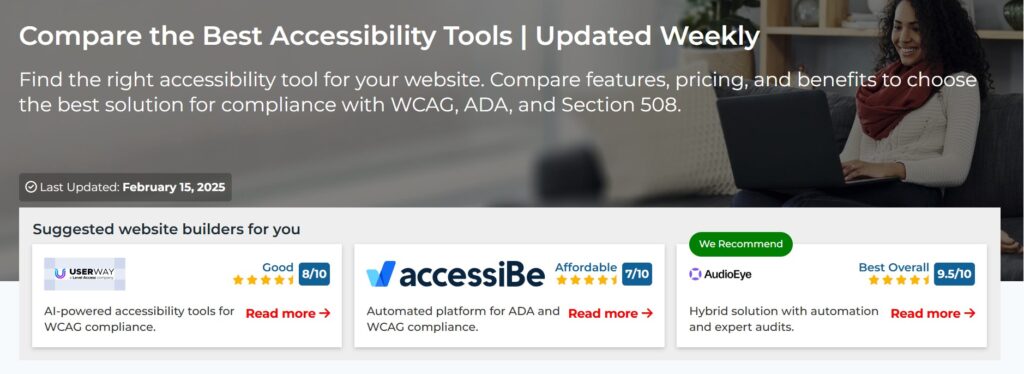
The Four-Phase Accessibility Testing Process
Website accessibility testing is a crucial practice to ensure that digital content is usable by everyone, including individuals with disabilities. A systematic approach to this task involves a comprehensive four-phase testing process. Each phase is designed to build upon the last, creating an effective framework for evaluating a website’s accessibility in a thorough and meaningful way.
The first phase focuses on planning and preparation. In this stage, professionals identify the specific goals of the accessibility test, as well as the criteria and standards to be used, such as the Web Content Accessibility Guidelines (WCAG). This preparatory work is essential as it provides a foundation for subsequent phases. During planning, it is also beneficial to assemble a dedicated team that possesses proficiency in both accessibility guidelines and technical skills to effectively conduct the testing.
The second phase is characterized by automated testing. In this step, various tools and software applications are employed to scan the website for common accessibility issues such as missing alt text, improper heading structures, and other code-related concerns. While automated testing can quickly uncover a multitude of problems, it is important to acknowledge its limitations. Some accessibility issues can only be detected through manual testing, highlighting the need to integrate both methods for a comprehensive evaluation.
Finally, the fourth phase consists of reporting and recommendations. After the tests have been conducted and results gathered, the findings are compiled into a detailed report outlining identified accessibility issues and suggestions for remediation. This report serves as a crucial tool for developers and designers to improve the website’s accessibility over time, fostering an inclusive digital experience. Overall, the four-phase accessibility testing process offers a structured approach, enabling teams to systematically evaluate and enhance the usability of their websites for all users.offering distinct features that contribute toward compliance with WCAG standards in 2025.
Phase 1 | Automated Scanning
Automated scanning stands as the initial phase in the comprehensive approach to testing website accessibility. This step is crucial as it enables users to quickly identify a range of issues that may hinder navigability for individuals with disabilities. Several widely recognized tools can facilitate this process, including Axe, WAVE, and Google’s Lighthouse. Each of these platforms offers unique functionalities intended to enhance the evaluation of web accessibility.
Axe is a popular tool that integrates easily with web browsers and provides developers real-time accessibility reports. It highlights areas needing improvement, such as color contrast and missing alternative text for images. WAVE, developed by WebAIM, is another exceptional resource that can identify similar issues while also offering detailed explanations and suggestions for remediation. Its visual feedback makes it especially user-friendly, allowing testers to see accessibility problems directly within the context of the page. Additionally, Google’s Lighthouse is an open-source tool designed to audit various web aspects, including accessibility. It generates reports that cover multiple performance indicators, allowing web developers to assess compliance with established guidelines.
While automated tools are invaluable for identifying a broad spectrum of issues, it is essential to recognize their limitations. These tools may not catch every possible accessibility problem. For example, they often struggle with dynamic content or evaluate context that requires human interpretation. To maximize the effectiveness of automated scanning, it is advisable to run these scans across various pages of the website. This ensures a comprehensive assessment rather than a singular snapshot, enhancing the likelihood of uncovering and addressing potential barriers to access. accessibility shortcomings, LambdaTest empowers developers to deliver high-quality, accessible digital experiences that cater to a diverse audience.
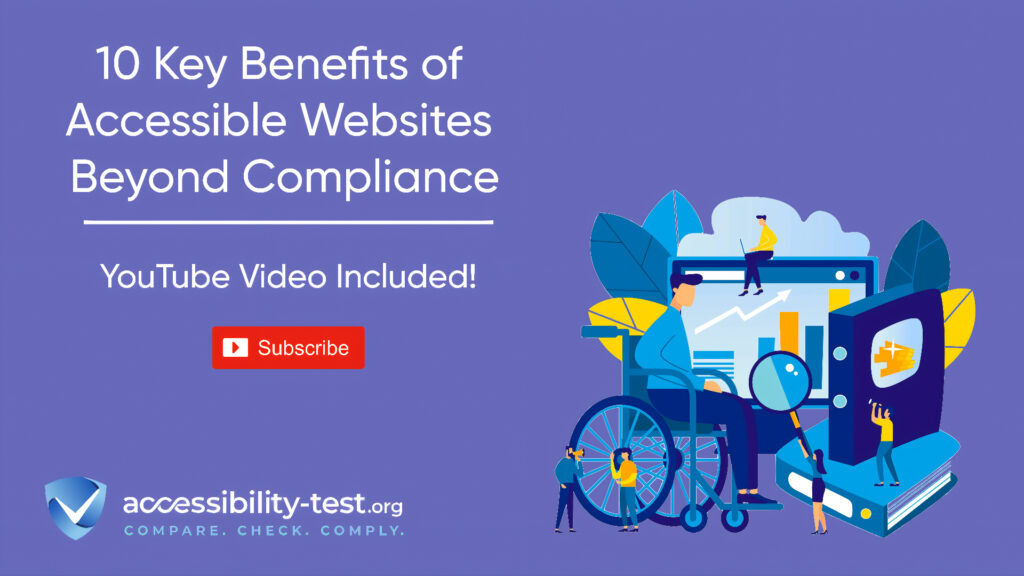
Phase 2 | Manual Testing
Manual testing is a crucial step in evaluating website accessibility, allowing for a deeper understanding of user interactions and experiences. Unlike automated tests, which can identify some accessibility issues, manual testing helps discover nuanced problems that may affect real users. This phase focuses on several key areas, including keyboard navigation, screen reader compatibility, cognitive assessment, and mobile accessibility.
Keyboard navigation is essential for users who rely on this method to interact with websites. To effectively test keyboard accessibility, one should navigate the website using only the keyboard. Check for logical tab order, ensuring users can move seamlessly through all interactive elements without confusion. Pay close attention to focus indicators; they should be clearly visible to indicate which element is currently selected. Testing also involves evaluating the usability of keyboard shortcuts and ensuring that all functionalities are accessible without a mouse.
The next critical area is screen reader compatibility. This involves testing with popular screen readers, such as JAWS, NVDA, or VoiceOver, to understand how the website content is read out loud. It’s important to verify that all images have descriptive alternative text and that headings are correctly structured, allowing users to navigate the content efficiently. Additionally, ensure that forms are properly labeled, enabling individuals using screen readers to comprehend and complete them effectively.
Cognitive assessment involves evaluating how easily users can understand and engage with the content. This testing could include checking for clear language, intuitive layouts, and sufficient contrast ratios that aid users with cognitive disabilities. Furthermore, mobile accessibility testing is indispensable, as more users access websites via mobile devices. Test the website’s performance across various screen sizes and devices to ensure the design is responsive and maintains ease of use..
Phase 3 | User Testing
User testing serves as the ultimate measure of website accessibility, providing insights that automated tools simply cannot replicate. To effectively conduct user testing, sessions should be structured to include individuals with varying abilities, ensuring that a diverse range of experiences and challenges is represented. This variety accounts for different disabilities, including visual, auditory, motor, and cognitive impairments, as well as differing levels of tech-savviness. By inviting users with diverse backgrounds, companies can better understand how their websites perform in real-world scenarios.
When organizing these testing sessions, it is crucial to create a welcoming environment where users feel comfortable expressing their thoughts and experiences. This can be achieved by informing participants beforehand about the purpose of the test and reassuring them that their feedback—whether positive or negative—is valuable. Open-ended questions during the session allow users to share their experiences freely, enabling facilitators to gain deeper insights that might not surface through predefined queries. Feedback regarding navigation, content comprehension, or any technical barriers encountered during the testing can reveal areas for improvement that may not be immediately apparent through other assessment methods.
The value of real-world user experiences cannot be overstated; it serves as a foundation for enhancing website accessibility. Observing users as they interact with the site provides rich contextual clues into how accessibility measures fare in practical use. Analytics data can also contribute to this understanding, but the subjective experiences captured through user testing offer critical perspectives. An iterative approach to testing, where accessibility adjustments are made followed by additional rounds of testing, can lead to significant improvements in user satisfaction, usability, and overall site accessibility.
Phase 4 | Continuous Feedback and Iteration
In the realm of website accessibility, the fourth phase of testing emphasizes the critical importance of continuous feedback and iteration. This stage allows organizations to ensure that their websites remain accessible as they evolve over time, addressing new challenges and incorporating user insights to improve overall experience.
To achieve effective accessibility, it is essential to establish routine check-ins that monitor the website’s compatibility with various accessibility standards. Regular assessments can reveal new issues arising from updates, design changes, or content additions, necessitating a proactive approach to accessibility management. By integrating feedback mechanisms, such as user surveys or usability testing with individuals who have disabilities, organizations can gain valuable insights directly from the end-users of their websites.
This continuous feedback is not merely a one-off process; it should be built into the website’s development lifecycle. Leaning on tools like accessibility evaluation software can help streamline this iterative process, identifying vulnerabilities and areas for enhancement. By analyzing this data, developers can prioritize specific changes and optimizations that need to be implemented to ensure compliance with accessibility guidelines.
Moreover, involving stakeholders, including users with disabilities, in the feedback loop can significantly amplify the effectiveness of testing efforts. Their real-world experiences can highlight overlooked issues and provide context that automated testing tools may miss. This collaboration fosters an inclusive environment, ultimately leading to a website that is both user-friendly and compliant with accessibility standards.
In conclusion, embracing a mindset of continuous feedback and iteration is vital for maintaining website accessibility. By committing to regular assessments and incorporating user insights, organizations can ensure their websites adapt to evolving standards and meet the needs of all users, thereby enhancing the overall user experience environment.
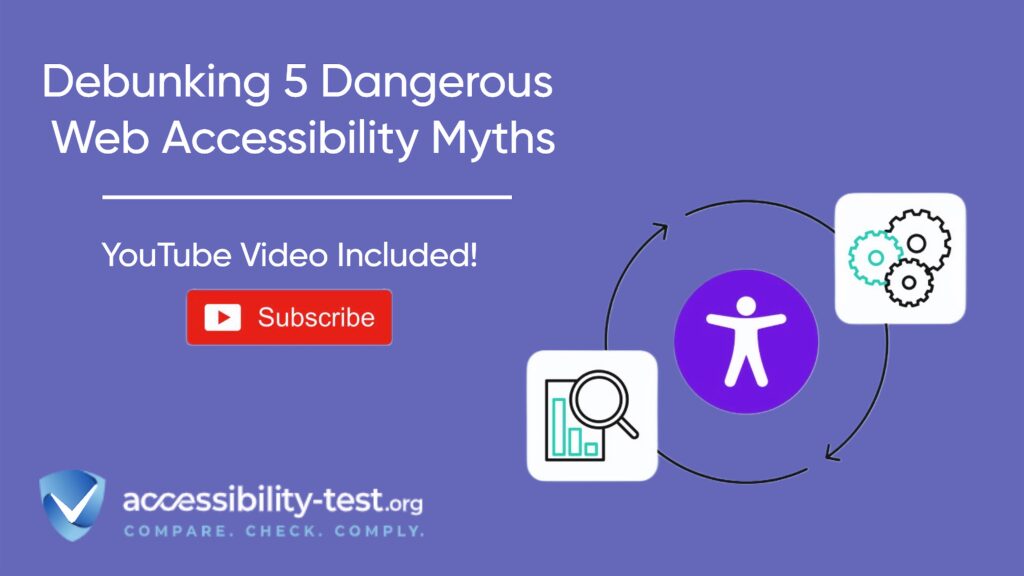
Test your site’s feature compliance with our free scanner
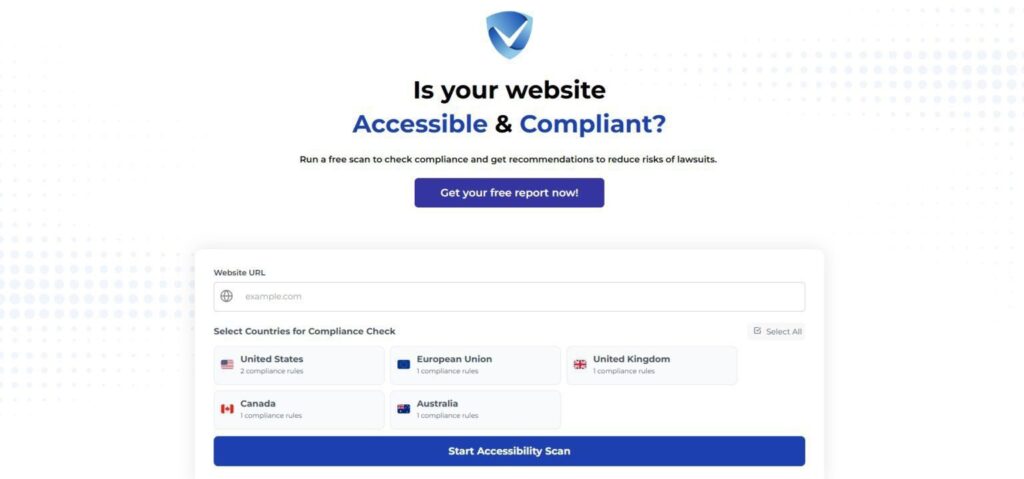
Testing website accessibility is an indispensable component of creating an inclusive digital environment. By ensuring that websites are accessible to all users, including those with disabilities, you not only adhere to legal obligations but also enhance user experience and broaden your audience reach. Comprehensive accessibility testing guarantees that every user can navigate your site effortlessly, vastly improving overall engagement and satisfaction levels.
Adopting a 360° approach to accessibility testing involves leveraging various methods, including automated tools, manual testing, and user feedback. This multifaceted strategy allows for a thorough assessment of your website’s accessibility features. Combining these techniques enables you to uncover potential barriers that may not be evident through automated testing alone. It is critical to recognize that accessibility is not a one-time effort but rather an ongoing commitment to continually evaluate and enhance your website’s usability.
For those looking to deepen their understanding of accessibility testing, numerous resources are available. Organizations such as the Web Accessibility Initiative (WAI) offer guidelines and tools to help developers create user-friendly experiences for everyone. Additionally, consider utilizing online courses and workshops tailored specifically to website accessibility. These resources can provide valuable insights into best practices and the latest industry standards.
Encouraging your team to prioritize accessibility testing not only fosters a culture of inclusivity but also demonstrates your commitment to social responsibility. As you embark on this journey, remember that effective website accessibility enhances the digital experience for all users, ultimately contributing to a more equitable internet. By implementing the strategies discussed in this post, you will be well on your way to providing an optimal web experience that meets the diverse needs of your audience.



